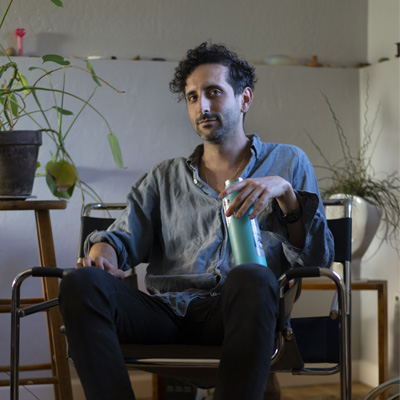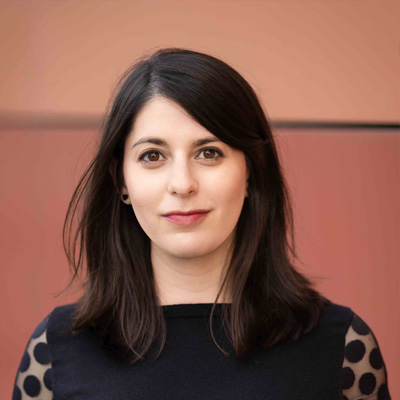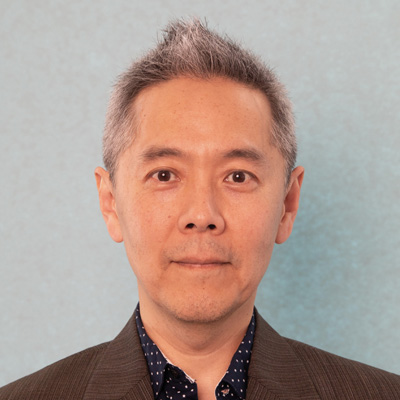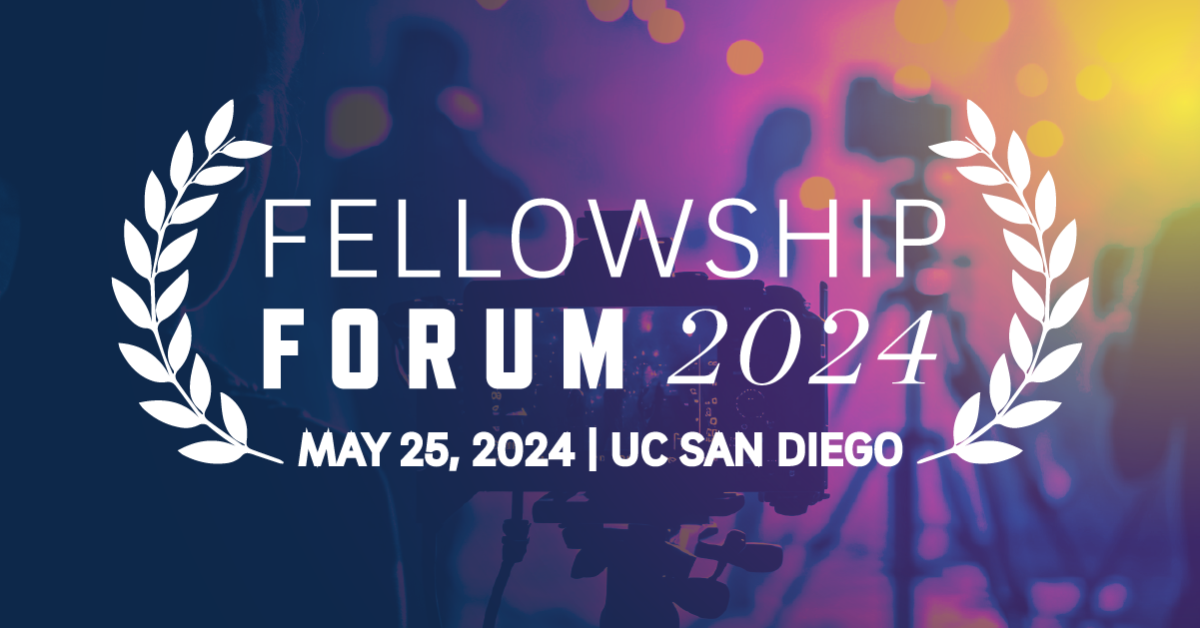A Showcase to Celebrate Cinematic Ingenuity
The Suraj Israni Center for Cinematic Arts presents the inaugural Fellowship Forum
Story by:
Published Date
Story by:
Topics covered:
Share This:
Article Content
Editor's note: This event has been postponed. Please stay tuned for updates.
Film as a medium can be very powerful. The weaving of images, sound and narrative activates multiple senses to create nearly infinite juxtapositions in meaning. For undergraduate student Macey Keung, she compares it to composing improvisational music. “Like jazz, film is dynamic and unpredictable. It’s the interaction between all the elements—lighting, camera, actors, sound—all coming together in a harmony to evoke a specific feeling from the audience.”
More than two dozen UC San Diego student, staff and faculty filmmakers have received fellowship funding from the Suraj Israni Center for Cinematic Arts to pursue their unique film ambitions. On May 25, the campus and local community are invited to attend the inaugural Suraj Israni Center Fellowship Forum to discover and celebrate their diverse cinematic visions.
Fellows receive up to $2,500 to support their projects, which can be utilized for production costs, research, travel and film festival attendance. Current narrative and short film projects range from scrutinizing the ways artificial intelligence can distort reality to exploring the cross-cultural use of sound in film and inviting a new perspective on the benefits of psychedelics.
The free event will begin at 2 p.m. at the Mosaic Building Auditorium. The program will include a short discussion with several fellows about their current projects, as well as a screening of portions of their films to offer a sense of the breadth and depth of their work.
In advance of the forum, we connected with four fellows to learn more about their work.
A psychedelic journey

Macey Keung, an undergraduate student in visual arts, aims to create films that resonate with underrepresented youth. Her other goal is to shift the mainstream portrayal of psychedelics in media to focus on their potential to spur self-discovery. These two themes play a central role in her new film, which centers on three high school seniors who skip class to embark on a psychedelic journey of connection and self-discovery.
“As a queer woman of color, I wasn’t fully able to relate to the coming-of-age films growing up because the characters were, for the most part, predominantly white and straight,” explained Keung. “My film centers three queer characters of color whose identities enrich the plot but aren't the source of conflict. The film is ultimately about freedom and youth. It delves into the complexities of friendship, the challenges of growing up with intersectional identities and the universal quest for meaning and belonging.”
As an artist, Keung embraces filmmaking for its capacity to present meaningful stories and the unpredictable directions that can happen during collaboration. “There are happy accidents, beautiful moments of spontaneity,” she said. “It takes a huge team, and the result is so much greater than the sum of its parts. I am thankful for the Suraj Israni Center fellowship funds, which have alleviated production and equipment expenses and allowed me to compensate cast and crew members.”
Dream team

Staff member Lev Kalman and his collaborator Whitney Horn bring a distinctive style to their films marked by handheld 16mm cinematography, dreamy electronic music and blend of philosophical musings with absurdist humor. Instead of centering narrative in their films, the duo prefers to present a series of images, moments, characters, jokes and ideas, each reflecting the other in poetic and witty ways.
Their latest feature film “Dream Team” world premiered at the International Film Festival Rotterdam in January, which follows two detectives as they “uncover an international, interspecies mystery” in an homage to 1990’s cable television thrillers. Kalman and Horn are also in post-production of “Twin Snakes,” which was supported by the Suraj Israni Center fellowship.
“Low-budget, noncommercial films like ours can only happen when we get support from organizations like the Suraj Israni Center,” said Kalman, who is part of UC San Diego’s Media Teaching Lab and is a programmer at the San Diego Asian Film Festival. “I’m especially glad that the grant supports UC San Diego staff like myself—we’re a crucial part of the school’s arts community!”
Distorted realities

Artificial intelligence (AI) has opened new possibilities for workplace efficiency and data analysis, yet the pervasive technology has also revealed avenues for media manipulation, surveillance, and the spread of misinformation. As an artist, writer and experimental filmmaker, Visual Arts MFA student Emily Greenberg is flipping the gaze of surveillance to examine the construction of authority, reality and transparency. To do this, she is working with AI models to examine the threats of the technology and explore the psychological impact of being exposed to manipulated content.
Through Suraj Israni Center fellowship funds, Greenberg has been able to purchase subscriptions to cutting-edge AI models that have enhanced experimentation. “The models help me create still images, moving images and voice clones and assist with processes like increasing video resolution,” explained Greenberg. “I’m also hoping to hire a professional voice actor for one of the short films and a professional composer for another.”
The project is part of her MFA thesis work, which will conclude with a screening of short films. “I’m currently making some celebrity deep fakes that reflect on the harms generative AI poses to writers, actors and labor more generally,” said Greenberg. “In another project, I’m swapping faces created with AI footage I’ve filmed of actual people and thinking through what it means to have real psychological responses to these fake people who have never existed and whose faces are incredibly generic and idealized.”
Cinema without borders

The birth and evolution of cinema is uniquely connected across international borders, sharing style, technology and storytelling attributes. Professor and Hajime Mori Chair in Japanese Language and Literature Daisuke Miyao is fascinated by the points of connection between films from different times and places and is dedicated to making film theory approachable for everyone.
Miyao is currently working on a new book about the films of Jacques Demy, an acclaimed French filmmaker. One part of the research will focus on the history of sound in film, and how Demy adopted an interdisciplinary approach. Miyao will also extend his scholarship on cross-cultural film styles and film reception as it relates to the transnational significance of Demy’s work.
“The main focus will be the historical undercurrent in Demy’s films, such as the Post-WWII Americanism, the Algerian War and Union Strikes, from the standpoint of transnational gender studies and queer studies,” explained Miyao. “The Suraj Israni Center fellowship has helped me to conduct a research trip to Lyon, France to have an essential meeting with my co-author, Martin Barnier (University Lyon 2), to check each other’s chapters and to exchange ideas about the introduction of the book.”
Growing the cinematic arts
Opportunities to study film history and production is growing exponentially at UC San Diego. Since the establishment of the Suraj Israni Center for Cinematic Arts in the School of Arts and Humanities in 2021, the center has hosted dozens of events with industry professionals and awarded 27 fellowships to support the artistic ambitions of student, staff and faculty filmmakers and scholars.
In addition, a new major in cinematic studies has been established at the Institute of Arts and Humanities, complementing the existing film studies minor. Beginning in fall 2024, students are invited to enroll in the new program to learn the fundamentals of film production, a critical understanding of cinematography and real-world experience through internships and other student-led projects.
You May Also Like
UC San Diego is Strengthening U.S. Semiconductor Innovation and Workforce Development
Technology & EngineeringStay in the Know
Keep up with all the latest from UC San Diego. Subscribe to the newsletter today.




